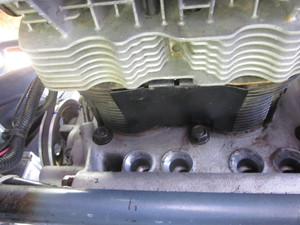I thought my exhaust note was a bit loud, but discovered that my left cylinder head wants to leave my block. I've only had my Beck for about 4 days and inspite of the 6000km on the clock, I think I have to pull the engine and check out the case. My valves needed adjusting as soon as I got the car, so while I had the valve cover off, I put a torque wrench on the front cast nut...and it turned. I pulled the rocker assembly off and proceeded to retorque the 4 exposed nuts. Only one of them would take the 23# torque; the rest wanted to continue turning. I'm going to pull the engine today. Any thoughts???
Also, my hood latch won't catch. Why won't that 'li' in the receiver stay closed so that the male end will engage it? That little lip doesn't slide over and stay there.
Meade










